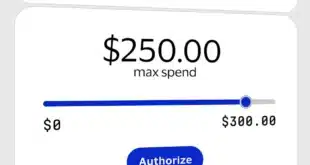As a new phase of real-time payments in the United States draws near, don’t expect payment cards to go away any time soon. That’s the consensus from several speakers at the Smarter Faster Payments 2023 conference sponsored by Nacha this week in Las Vegas.
Each time a new payment rail has been introduced, it has not encroached on existing electronic payments, Christopher Danvers, senior manager of product development and card strategy at Q2 Software Inc., said during a panel on the future of card payments. “It’s been cash and check,” Danvers said.
Real-time payments is about to get a boost, especially in attention if not use, when the Federal Reserve launches its real-time payments service FedNow in July. Though it’s starting with a set of financial institutions, processors, and providers, it eventually could reach most U.S. banks and credit unions, though no one is forecasting when that might happen.

That, along with the 5-year-old Real Time Payments network from The Clearing House Payments Co. LLC and faster payments programs from peer-to-peer payment providers—PayPal, Cash App, Zelle, Venmo, for example—could generate consumer and merchant interest.
FedNow will be a new payment rail, with products and services incorporating it marketed by private companies.
While real-time payments, particularly in the account-to-account use case, may have the potential to replace cards in some transactions no one should expect that to happen to a great degree anytime soon. That will be a “significantly longer stretch,” Danvers said.
Cards, unlike real-time payments services in operation now or about to be, have well-liked affinity programs that consumers enjoy. A rewards program with a real-time payment service could shift the center of gravity in payments from an issuer-based to a merchant-based business, a proposition that could happen.
“The quick answer to, can we move affinity from the issuer to the merchant? I believe we can move from issuer reward to merchant reward,” said Louis Grilli, senior innovation strategist at PSCU, a St. Petersburg, Fla.-based credit union service organization. But doing so would not be without its challenges.
Also, as Danvers said, real-time payments services, at least to date, may not have the economics to support an affinity program.
Surmounting consumer fondness for cards would be another big hurdle. “The customer is expecting no liability when something doesn’t go right,” Danvers said. In the real-time payments world, once the payment is sent, it’s irrevocable. There’s no guarantee of a chargeback process or a way to make everybody in the payment experience whole, he said. Zelle, the peer-to-peer payment service from Early Warning Services LLC, helped blaze this trail, he said.
“It’s going to be an educational experience for the average consumer,” he said of real-time payments adoption.




